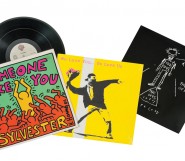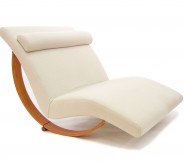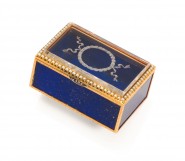Lot #11 - Charles Henry Kerry(1857-1928) And Henry King (1855-1923)
-
Auction House:Mossgreen
-
Sale Name:Australian Indigenous & Oceanic Art
-
Sale Date:22 Jul 2014 ~ 6.30pm (Part 1 - Lots 1 - 198)
23 Jul 2014 ~ 2.30pm (Part 2 - Lots 199 - 331) -
Lot #:11
-
Lot Description:Charles Henry Kerry(1857-1928) And Henry King (1855-1923)
Twelve Early 20th Century Silver Gelatin Prints - Untitled [Illeg]
silver gelatin print (12)
21.4 x 16.6 cm -
Provenance:Tyrrell's Museum, Sydney; Angus & Roberston, New South Wales; Private Collection, New South Wales (purchased from the above 1950s); By descent; Private Collection, Sydney; A Private Corporate Collection
-
Notes:624 Australian Aboriginal NSW; 637 Australian Aboriginal NSW; 1373 Warrior Of The Kalkkadoon Tribe; 1384 Queensland Warrior; 1410 Austn Aborigine (Queensland); 1824 Aboriginal Roma Queensland; 1830 "Melandiga" Clarence River Warrior; 1838 "Dhraub" Aboriginal Bombala NSW; 1871 Aboriginal Woman Bombala NSW; 1955 "Cunninghun" Aboriginal Armidale District; 1989 "Wharancoo" Aboriginal Tenterfield District Charles Kerry (1857Ð1928) and Henry King (1855Ð1923) were among SydneyÕs most successful commercial photographers of the nineteenth and early twentieth centuries. Both are noted for their studio portraits of the Indigenous people of Eastern Australia. In 1885, Kerry was invited to prepare Aboriginal portraits and ceremonial scenes for the 1886 Colonial and Indian Exhibition in London.1 King was awarded a certificate and a bronze medal for the size, technique and artistic finish of his portraits at the World Columbian Exposition at Chicago in 1893.2 All but one of the current images was shot in the studio. Individuals, who may have entered the studio wearing Western clothes, were undressed and redressed in ÔtypicalÕ costume. Some were posed in stiff warlike postures in front of painted backdrops, holding generic artefacts from the photographerÕs collection. The invention of dry-plate technology enabled both Kerry and King to venture into the landscape with increased ease, producing popular scenic views and urban street scenes, as well as recording landmark events. Both photographers travelled widely, using portable studios to create portraits of people from Bombala to the Namoi River and from the Atherton Tablelands to Roma. Charles Kerry famously used the expanding rail network to reach Indigenous subjects. The current images capture the appetite for ethnographic photography in the nineteenth century. Driven by fascination with racial difference and classification, the collection exposes the concerns of the photographers as strikingly as it does the subjugation of the sitters. Posed in the studio as ÔwarriorsÕ, many of these images record the pain of people entrapped by the cruelty of colonial conquest. Strangely mute, the images are a measure of the distance between settler society and the diverse peoples of Aboriginal Australia. For all their problematic qualities, however, these precious images provide a vivid record of individuals who were enlisted into a photographic project to describe race. John Kean 1 Keast Burke, ÒKerry, Charles Henry (1857Ð1928)Ó, Australian Dictionary of Biography, National Centre of Biography, Australian National University, http://adb.anu.edu.au/biography/kerry-charles-henry-6940/text12049 2 Richard King, ÒKing, Henry (1855Ð1923)Ó, Australian Dictionary of Biography, National Centre of Biography, Australian National University http://adb.anu.edu.au/biography/king-henry-6959/text12087, accessed 10 April 2013.
-
Estimate:A$10,000 - 15,000
-
Realised Price:
-
Category:Art
This Sale has been held and this item is no longer available. Details are provided for information purposes only.















